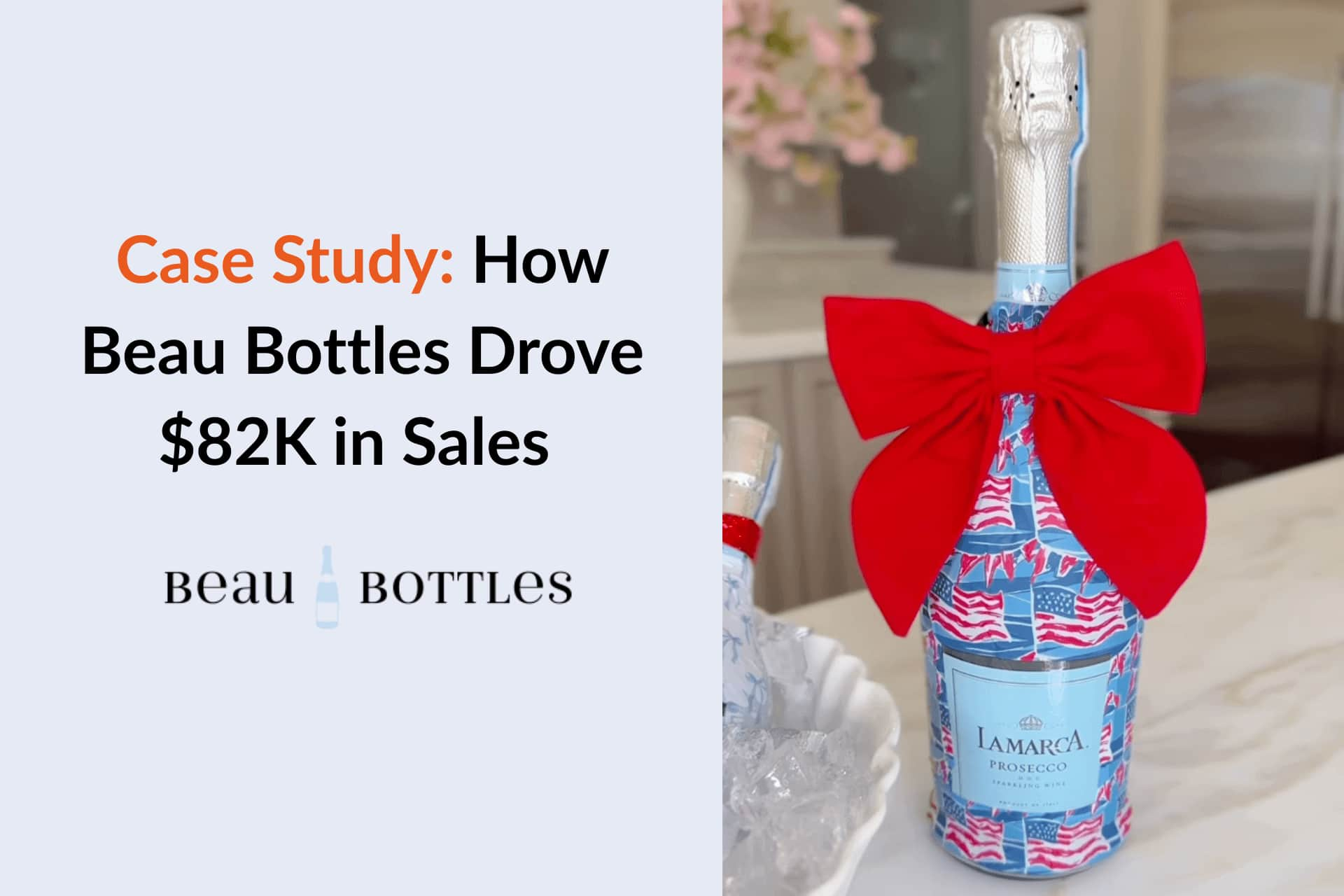





Fohr has long been a go-to platform for influencer marketing, but many businesses are now seeking alternatives due to a few notable drawbacks. Users often cite limited customization options for campaigns, challenges with influencer discovery accuracy, and high pricing as major reasons for switching to other platforms.
These issues have led to a growing demand for more flexible and cost-effective tools. As a result, more brands are turning to platforms that offer a wider range of features at a more scalable price point.
As influencer marketing continues to gain traction, more options are emerging to suit different business needs. According to recent data, the influencer marketing software market is expected to reach $22.3 billion by 2025, with platforms like Influencer Hero leading the way for providing customizable, data-driven solutions for both large and small businesses.
Let’s dive into the top 10 Fohr alternatives that can elevate your marketing strategy:
1. Influencer Hero
2. Modash
3. Upfluence
4. Captive8
5. CreatorIQ
6. HypeAuditor
7. Grin
8. Saral
9. Onclusive
10. MOGL
Here are specific reasons why brands might seek alternatives to Fohr, based on real user feedback:
Fohr operates as an opt-in network, meaning you can only access data and collaborate with creators who’ve explicitly signed up with Fohr and connected their accounts. While this guarantees verified metrics, it significantly restricts reach, especially if you're looking for niche or emerging creators outside their ecosystem. (G2)
Multiple creators report that most listings are unpaid or gifting-only. This may result in reduced interest from experienced influencers, making it harder for brands to attract high-quality talent for paid partnerships.
Some influencers report receiving misaligned campaign invites, like student-oriented campaigns being sent to older creators. For brands, this points to flaws in creator segmentation or targeting logic, potentially leading to lower application quality and more manual filtering during campaigns.
Our comparison focuses on several key aspects:
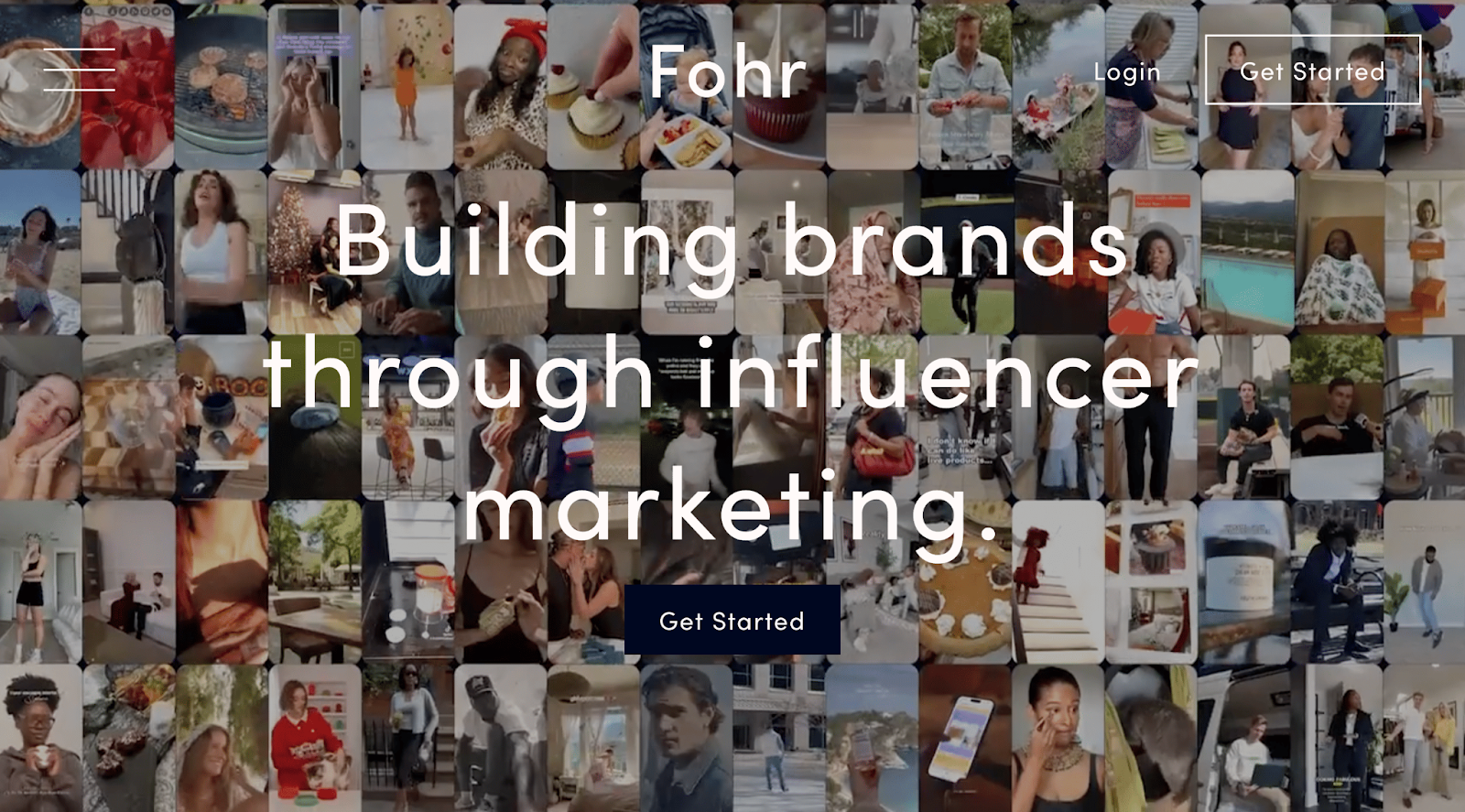
Platform Coverage: Instagram, TikTok, YouTube, and Facebook through API integrations.
Best For: Fohr is best suited for brands that want highly verified, opt-in influencers, especially in the U.S. market, and for those looking to manage gifting, UGC, and paid campaigns in one centralized platform.
Pricing: Fohr requires an annual commitment and does not offer a free trial. There are three pricing tiers:
Reviews: 5.0 / 5.0 (G2)
Ease of Use (UX/UI): Users generally find Fohr's interface intuitive and straightforward, especially for campaign creation and tracking. The all-in-one workflow from discovery to outreach and reporting is described as streamlined and efficient, though some users note it lacks customization compared to more open-ended CRMs.
Customer Support: Fohr offers dedicated customer success representatives, particularly during onboarding and for campaign support. Users report that the support team is proactive and knowledgeable, assisting with A/B testing, messaging tone, and onboarding strategies.
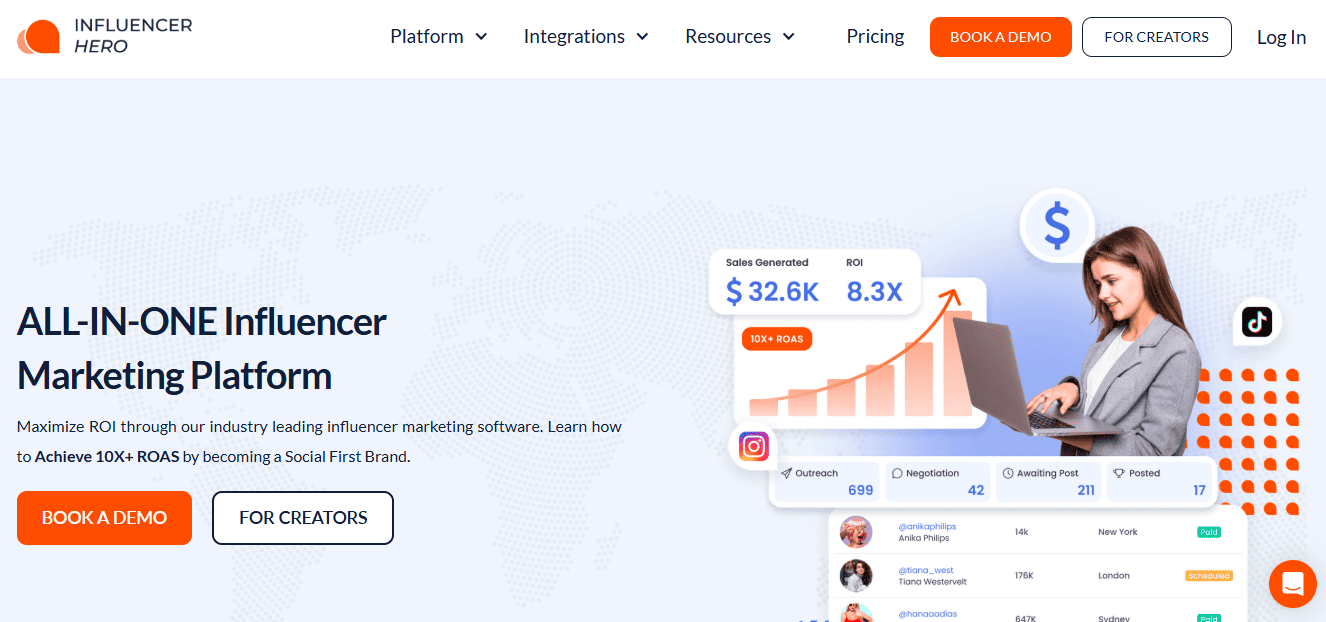
Platform Coverage: Instagram, TikTok, YouTube, Facebook, Pinterest, Snapchat, X, Twitch
Best For: Influencer Hero is best for D2C brands and eCommerce teams looking to scale influencer marketing campaigns with deep insights, multi-platform support, and automation tools. It's ideal for brands aiming for a high ROI through influencer partnerships across a variety of social media platforms.
Pricing: (Plans are monthly and scalable.)
Reviews: 5.0 / 5.0 (Capterra)
Ease of Use (UX/UI): Influencer Hero is known for its intuitive design and user-friendly interface. The streamlined dashboard allows for seamless navigation, automated workflows, and customizable email templates, which significantly reduces the time spent on manual tasks.
Customer Support: Customer support is one of Influencer Hero's strongest features. The platform offers 24/7 live chat with real humans, responsive email support, and a comprehensive Help Center with both written and video tutorials. Every plan includes a dedicated account manager from day one, and Pro plan users have access to a private Slack channel for quicker support.
Fohr and Influencer Hero both cater to brands looking to scale influencer marketing campaigns, but they differ in several ways. Influencer Hero offers a broader range of features such as AI-driven outreach, a more robust CRM, and integrated eCommerce tools, making it ideal for brands looking for a comprehensive solution. Fohr, on the other hand, operates as an opt-in network and focuses more on community-driven creator outreach with its bulletin tool and limited outreach automation.
Regarding pricing, Influencer Hero provides more flexible plans starting at $649/month for the Standard plan, which is designed for up to 1,000 creators. In comparison, Fohr's pricing starts at $20,000 annually for the Essential plan, making Influencer Hero a more accessible option for brands looking for cost-effective solutions while scaling their influencer marketing efforts.
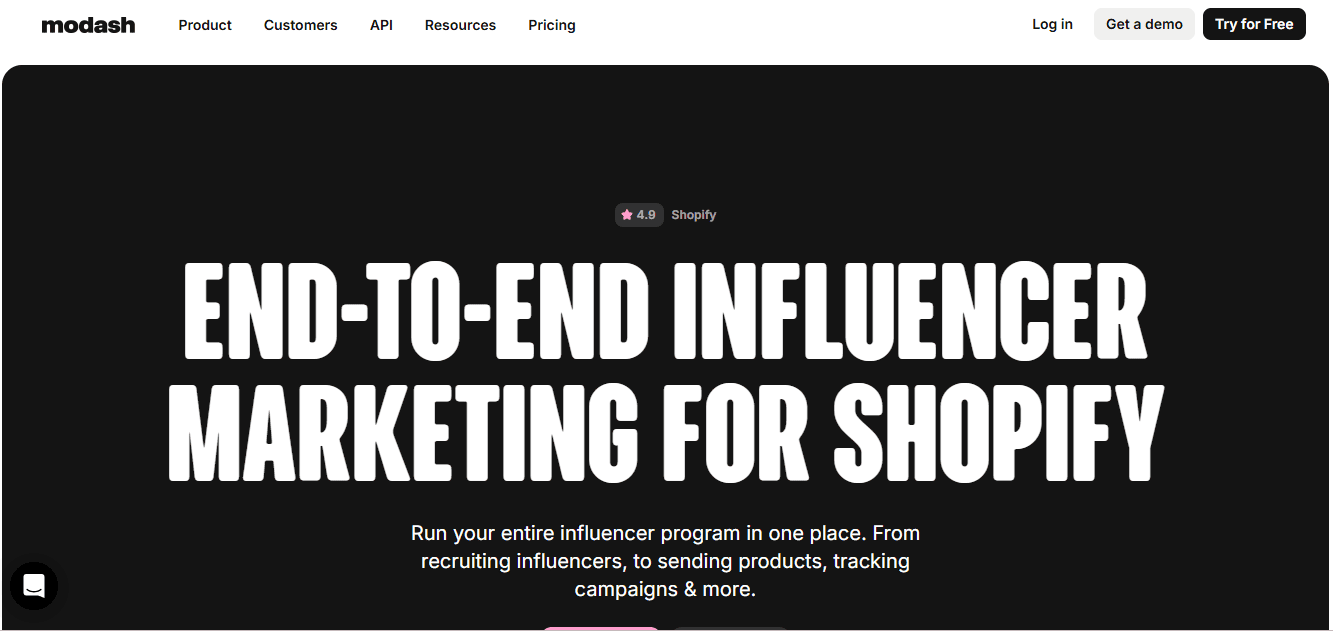
Platform Coverage: Instagram, TikTok, YouTube, and offers profile recognition for platforms like X, Snapchat, and others.
Best For: Modash is ideal for brands looking to scale influencer marketing with a focus on influencer discovery, bulk outreach, and campaign performance tracking. It's particularly well-suited for eCommerce brands using Shopify and those looking to automate affiliate payouts and influencer gifting.
Pricing: Modash offers free trials to both their Essentials and Performance plan.
Reviews: 4.9 / 5.0(Capterra.com)
Ease of Use (UX/UI): Users appreciate Modash's straightforward interface, with its seamless navigation from discovery to outreach and payment. The platform’s simple, clean design ensures that even non-technical teams can manage influencer campaigns without a steep learning curve. Many users highlight the intuitive filters and AI-powered search that make influencer discovery efficient.
Customer Support: Modash provides excellent customer support, with responsive teams offering both onboarding assistance and ongoing help. The platform offers personalized guidance through the campaign setup process, ensuring a smooth experience for new users. Reviews mention that the team is proactive and well-equipped to assist with troubleshooting and best practices.
Discover the 10 Modash alternatives to find improved features, competitive pricing, and up-to-date reviews, helping you select the right influencer marketing platform for 2025.
Fohr and Modash both offer valuable influencer marketing solutions, but they cater to different needs. Modash stands out with its massive database of over 350 million public creator profiles, allowing brands to work with a larger pool of creators, not restricted by opt-ins like Fohr. Additionally, Modash provides best-in-class AI-powered discovery filters and bulk outreach tools, which can save brands time in influencer selection and communication.
Modash’s pricing starts at $199/month for the Essentials plan, making it a more accessible option for brands just getting started. In comparison, Fohr’s pricing starts at $20,000 annually for the Essential plan, positioning Modash as the more budget-friendly option, especially for brands seeking efficiency with advanced search and bulk outreach tools without the high commitment.

Platform Coverage: Instagram, TikTok, YouTube, X , Twitch, Pinterest, WordPress blogs.
Best For: Upfluence is best for eCommerce brands, particularly those using Shopify or Amazon, looking for an all-in-one influencer marketing platform. It is ideal for businesses seeking to scale their influencer campaigns while tracking ROI through affiliate links, product gifting, and customer-influencer identification.
Pricing: Upfluence offers annual contracts with the following pricing.
Reviews: 4.6 / 5.0 (G2)
Ease of Use (UX/UI): Users generally find Upfluence’s interface to be intuitive, with a seamless workflow from influencer discovery to campaign execution. However, some new users have mentioned that the platform’s robust features may require a learning curve for those unfamiliar with influencer marketing tools.
Customer Support: Upfluence provides strong customer support with personalized onboarding assistance and ongoing help through various channels. Many users appreciate the detailed documentation and responsive team, although some have noted that the complexity of the platform might require more hands-on guidance during the initial stages.
Upfluence is ideal for eCommerce brands, especially those using Shopify or Amazon, with its strong integrations for sales tracking and affiliate programs. It also stands out with its extensive creator database and advanced AI-driven outreach tools. On the other hand, Fohr’s focus is more on influencer relationships and content management, with a smaller database that requires creators to opt-in.
Upfluence’s pricing starts at $1,276/month with an annual commitment, which is higher than Fohr’s $20,000 annually, but it offers more robust eCommerce capabilities, including direct integrations with major platforms like Shopify and Amazon, making it a more suitable option for brands looking to connect influencer campaigns to direct sales and ROI tracking.

Platform Coverage: Captiv8 supports influencer campaigns across Instagram, YouTube, TikTok, Facebook, Twitter, and Pinterest.
Best For: Captiv8 is best for large brands and enterprises looking for an all-in-one influencer marketing platform with advanced tracking and campaign management features. It’s particularly suitable for those focusing on competitive intelligence, deep performance metrics, and large-scale collaborations.
Pricing:
No monthly or customizable plans are available; pricing is rigid and enterprise-focused
Reviews: 4.6 / 5.0 (G2)
Ease of Use (UX/UI): Users find Captiv8's interface to be robust, with powerful filtering and reporting features. However, some users have noted that its complexity can make it challenging for smaller teams or new users to navigate efficiently.
Customer Support: Captiv8's customer support has faced criticism, with users mentioning slow response times and unaddressed payment issues. Some brands and creators report challenges with getting timely help or resolving account/payment-related concerns.
Explore the top 10 Captiv8 alternatives for effective influencer marketing, and explore more options to boost your strategy.
Brands looking for flexibility and a more budget-friendly option may prefer Fohr, while those with bigger budgets and a focus on enterprise-level campaigns may find Captiv8 to be a better fit.
Captiv8 is more suited to larger enterprises with substantial budgets, thanks to its comprehensive feature set, including competitive intelligence, advanced campaign tracking, and customizable reports. However, its pricing can be a deterrent for smaller brands, with a minimum annual cost of $25,000, not including additional fees for features like storefronts and affiliate programs.
Fohr, in contrast, caters more to a broader range of businesses, providing a platform that’s more accessible and user-friendly, though it lacks some of the advanced features offered by Captiv8.

Platform Coverage: Instagram, TikTok, YouTube, Facebook, Pinterest, Twitch, X.
Best For: CreatorIQ is best for large brands and enterprises that require an end-to-end influencer marketing solution, from discovery to campaign execution, tracking, and reporting. Beneficial for brands that need granular data, custom reporting, and integrated affiliate and UGC management across multiple social platforms.
Pricing:
Reviews: 4.6 / 5.0 (G2)
Ease of Use (UX/UI): CreatorIQ offers a robust and feature-rich interface that is well-received by users. While the platform is highly customizable and powerful, some users find the learning curve steep, especially when navigating its advanced reporting and campaign management tools.
Customer Support: CreatorIQ provides strong customer support, including a dedicated implementation manager and customer success team. Users value the strategic input, onboarding assistance, and regular support throughout their campaigns.
CreatorIQ and Fohr offer different strengths depending on the needs of the brand. CreatorIQ provides comprehensive tools for influencer discovery, campaign management, and reporting, along with advanced integrations with platforms like Meta and TikTok. It is ideal for brands that need detailed analytics, custom reports, and easy content management across multiple platforms.
In contrast, Fohr caters more to a variety of brand sizes but lacks some of the advanced features and integrations that CreatorIQ offers. Fohr's pricing starts at a lower entry point, making it more accessible for smaller businesses, but lacks CreatorIQ’s depth in API integrations and reporting capabilities.
Brands looking for an all-in-one solution with advanced tracking and reporting may prefer CreatorIQ, while those with a smaller budget or simpler needs might find Fohr to be a more practical option.

Platform Coverage: Instagram, TikTok, YouTube, Twitch, X (Twitter), Snapchat
Best For: HypeAuditor is best for brands looking for an advanced influencer discovery and campaign management platform, particularly those focusing on data-driven insights, brand safety, and influencer performance metrics across social media platforms like Instagram, TikTok, YouTube, and Twitch.
Pricing: Custom plans based on usage. Flexible contract terms depending on platform access, campaign volume, and number of reports.
Reviews: 4.5 / 5.0 (G2)
Ease of Use (UX/UI): Users find HypeAuditor’s interface to be relatively intuitive once familiar with the platform's features. However, some note that the platform can be complex for beginners due to its wide range of options for influencer discovery, campaign tracking, and reporting.
Customer Support: HypeAuditor offers strong customer support, providing onboarding assistance and responsive help through their support team. Users appreciate the quick response times, and the platform also offers support through email, ensuring that brands can get the help they need.
If you’re a data-driven brand looking for advanced influencer discovery and analytics, HypeAuditor is the stronger choice. It offers AI-powered search, audience authenticity checks, and ROI tracking across multiple platforms. Its robust reporting tools and social listening capabilities make it especially useful for scaling or global campaigns.
On the other hand, Fohr is better suited for brands that value relationship-building with influencers and a more community-driven approach. It simplifies influencer vetting and content management, but lacks the depth of analytics and reporting found in HypeAuditor.
When it comes to pricing, HypeAuditor offers more flexible contract terms and starts with a $10,000/year Business Plan, while Fohr requires a larger upfront investment with plans starting at $20,000/year and no free trial option. For smaller brands or those with tight budgets, HypeAuditor’s free trial and scalable plans offer more entry points, whereas Fohr’s pricing structure caters more to established teams with long-term commitments.
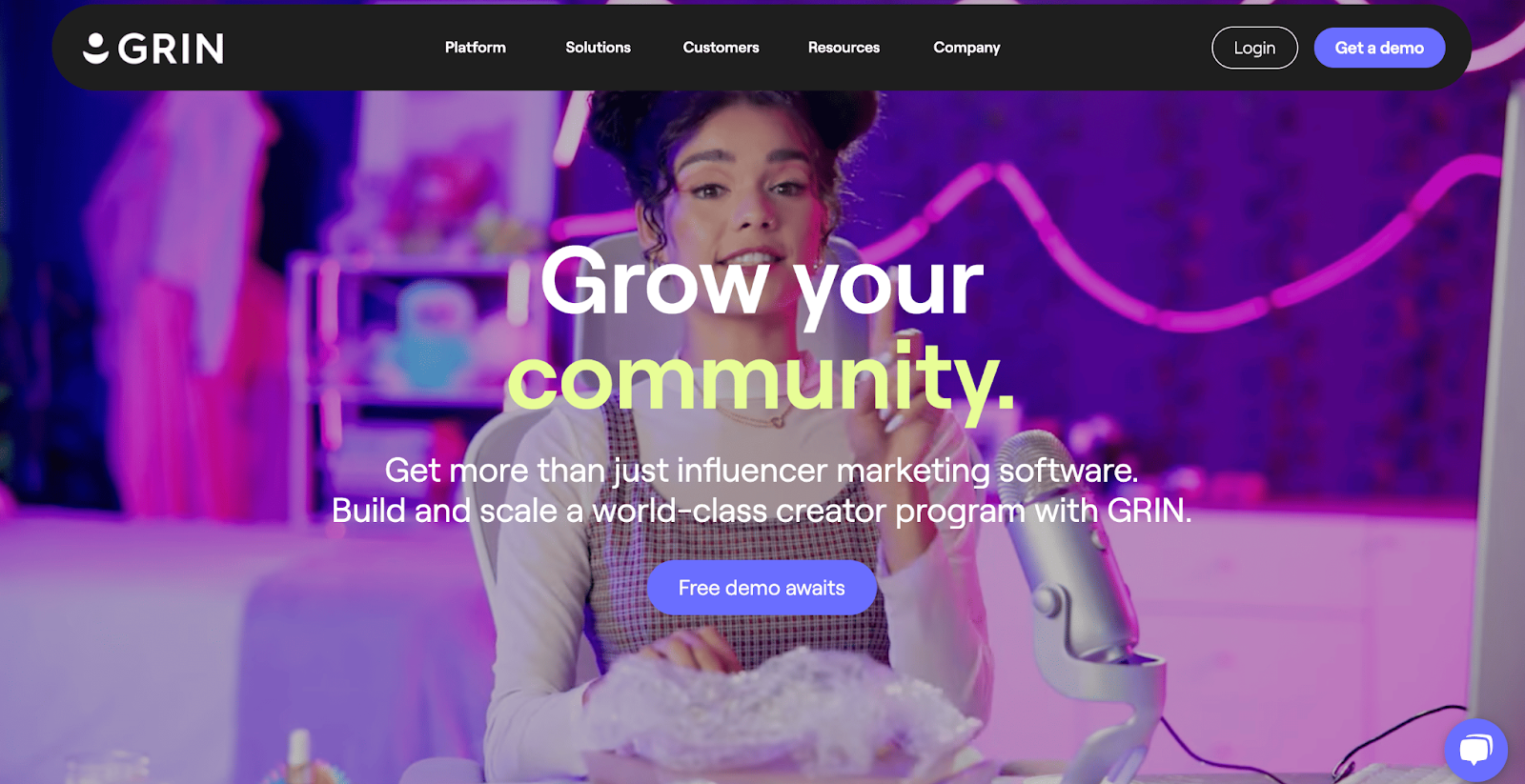
Platform Coverage: Instagram, TikTok, YouTube, X, Twitch, Snapchat
Best For: DTC and eCommerce brands looking to manage every stage of their influencer programs in one unified platform, from influencer discovery and gifting to affiliate tracking, UGC management, and in-app payments.
Pricing: Plans start at $25,000 per year, with monthly payments available and a required 12-month commitment; typical monthly costs range from $2,500 to over $10,000 depending on usage, though pricing transparency may vary based on selected features.
Reviews: 4.5 / 5.0 (G2)
Ease of Use (UX/UI): Users praise GRIN for its clean, intuitive interface that consolidates complex workflows into one dashboard. However, some reviewers mention occasional bugs, slow loading times, or glitchy content uploads that can hinder productivity during peak campaigns.
Customer Support: While many users report helpful and proactive support, others mention inconsistent follow-through, including delayed responses and unresolved technical issues. Some even note being billed for broken features or having difficulty canceling accounts.
Fohr’s strength lies in its opt-in creator network, pre-filtered Smart Groups, and its Bulletin tool that allows brands to post opportunities and let creators apply directly. GRIN, on the other hand, is a full-stack solution built specifically for DTC and eCommerce brands, featuring seamless Shopify integration, built-in payments, affiliate tracking, and robust campaign workflows that make it easier to scale.
While Fohr has a starting price of $20,000/year and requires an annual commitment, GRIN typically starts at around $25,000/year with monthly payment options. Brands looking for a curated creator network and community engagement might prefer Fohr, while those prioritizing automation, eCommerce workflows, and AI-assisted outreach will find GRIN a better fit.
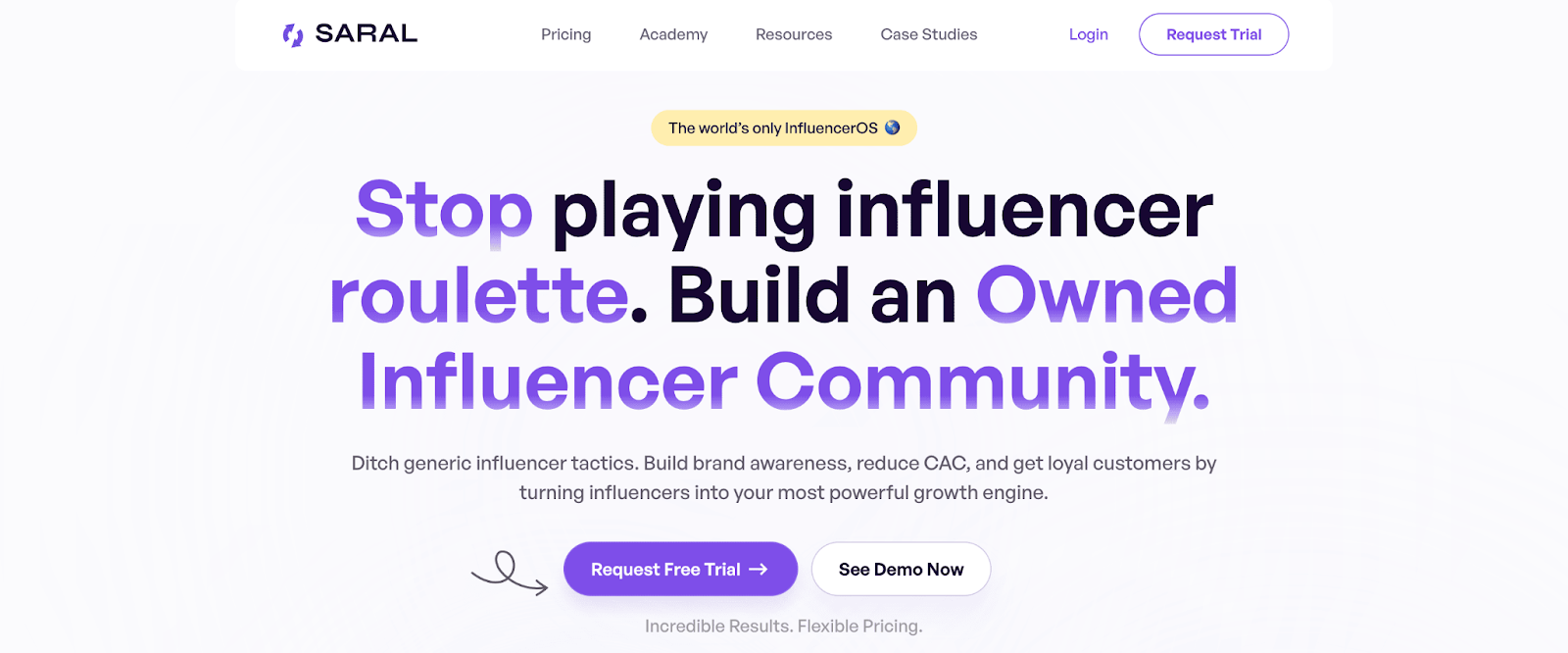
Platform Coverage: Instagram, TikTok, YouTube.
Best For: eCommerce brands, especially those on Shopify, looking to manage influencer outreach, gifting, and affiliate tracking without relying on a marketplace or opt-in network.
Pricing: Saral offers volume-based plans with a 1-week free trial. Quarterly and annual payment options are available:
Reviews: 4.7 / 5.0 (G2)
Ease of Use (UX/UI): Users highlight Saral’s clean interface and intuitive workflows, especially for campaign creation and influencer outreach. The lack of a traditional marketplace simplifies the process for teams who prefer real-time search and manual vetting.
Customer Support: Saral receives praise for fast, hands-on support. The team is noted for onboarding assistance and ongoing strategy tips. Some users mentioned their feedback is actively incorporated into new feature rollouts.
Fohr uses a curated, opt-in creator network backed by detailed API data from platforms like Meta and TikTok, making it ideal for brands that value verified influencers and pre-segmented Smart Groups. Saral, by contrast, operates as a real-time search engine without requiring influencer opt-in, giving brands more flexibility and reach across Instagram, TikTok, and YouTube.
Pricing-wise, Saral starts at $12,000/year while Fohr begins at $20,000/year with fewer plan tiers. Brands that want deeper content vetting and structured campaign workflows may lean toward Fohr, while leaner eCommerce teams prioritizing speed, automation, and outreach at scale will find Saral to be a more agile and cost-effective alternative.
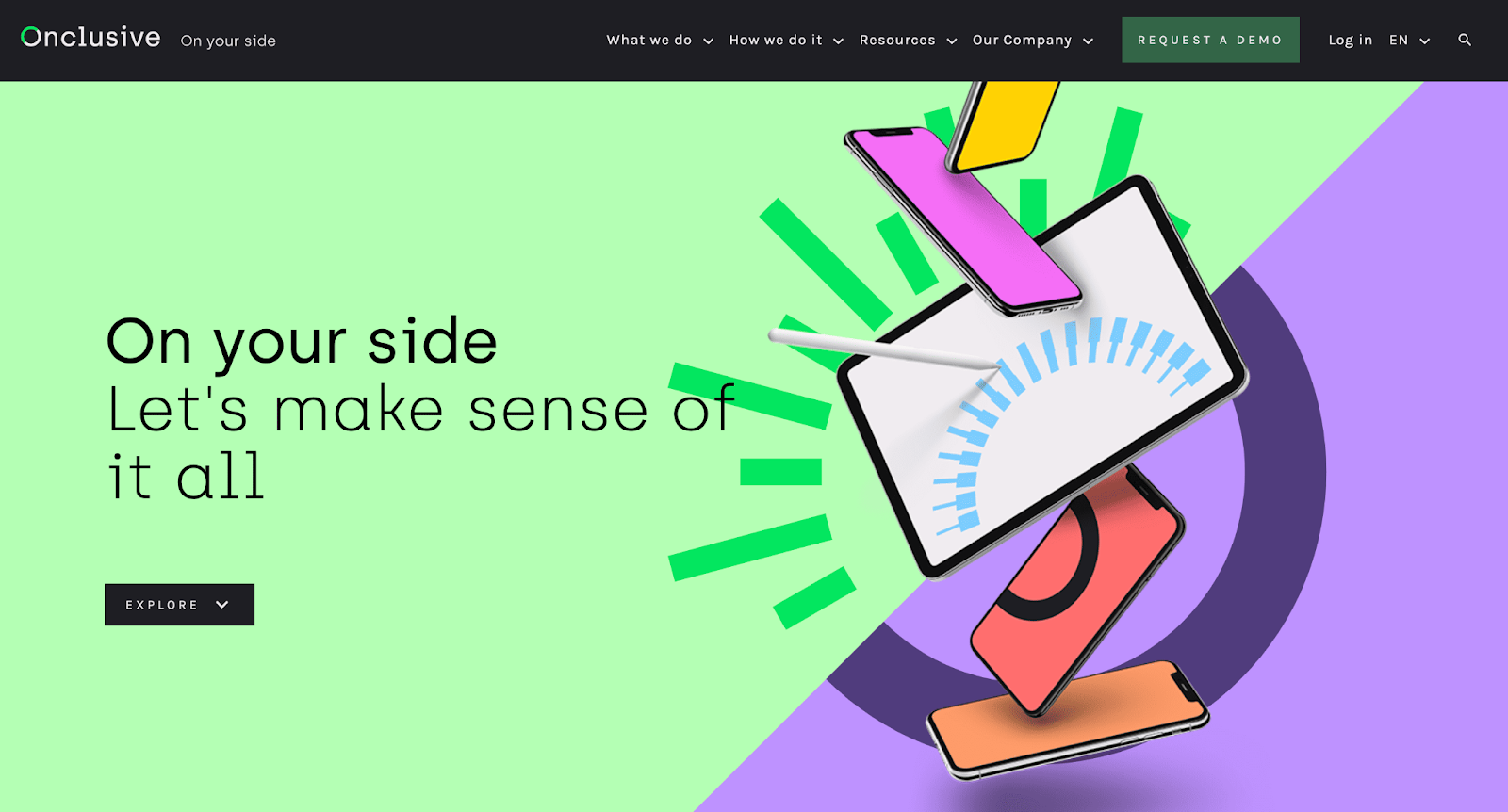
Platform Coverage: Instagram, TikTok, YouTube, X (Twitter), Reddit, Facebook, LinkedIn, Threads, BlueSky, WeChat, Weibo, and more. Also includes TV, radio, podcasts, online news, and print media via its Critical Mention integration.
Best For: PR and comms teams looking for a hybrid solution combining influencer monitoring, earned media coverage, and social listening across both traditional and digital channels.
Pricing: Custom pricing based on scope and media types. Typically billed annually, but monthly options may be available upon request. Estimated range: $8,000 to $20,000/year.
Reviews: 4.5 / 5.0 (G2)
Ease of Use (UX/UI): Users report the interface is straightforward once trained, though setup and query customization can require a learning curve. Many appreciate the flexibility in building and adjusting search parameters for granular tracking.
Customer Support: Onclusive provides a dedicated account manager from onboarding. Users highlight responsive, hands-on support with customized training, help setting up queries, and fast responses to issues, often outperforming competitors on service.
Fohr is best suited for influencer marketing teams that want a curated creator network, built-in campaign tools, and smart outreach flows. It excels in hands-on creator management, gifting, and live content tracking, making it ideal for influencer-focused campaigns. Onclusive, on the other hand, goes far beyond influencer marketing, offering PR, media monitoring, and advanced social listening across 25+ digital and traditional media platforms, making it a robust fit for comms teams.
Fohr starts at $20,000/year with a fully influencer-centric approach, while Onclusive ranges from $8,000–$20,000/year depending on usage. Choose Fohr for influencer campaign execution, or Onclusive if your team prioritizes holistic media tracking, UGC discovery, and competitive benchmarking across multiple media types.
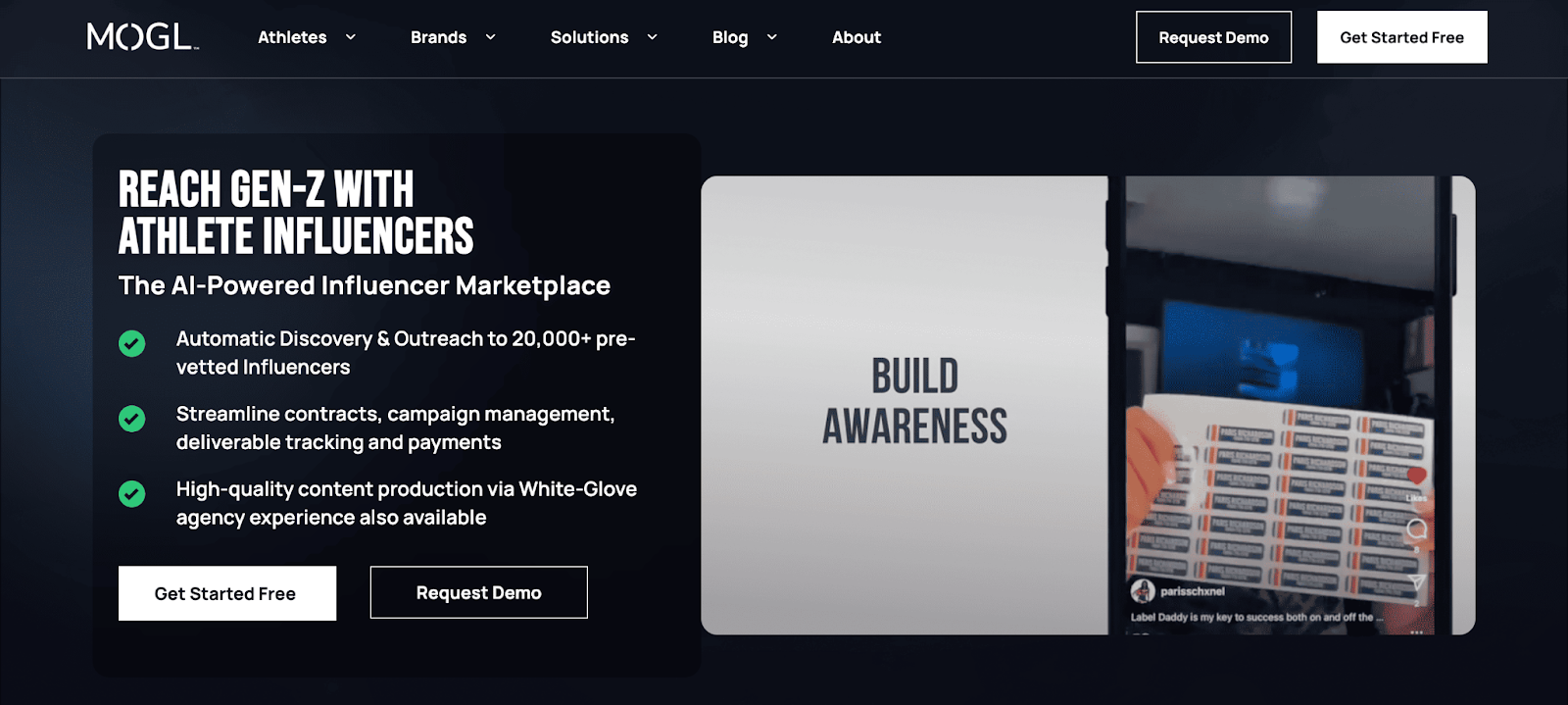
Platform Coverage: Primarily Instagram. Campaigns focus on U.S.-based athlete creators with some UGC support. No native TikTok or YouTube search functionalities mentioned.
Best For: Brands targeting Gen Z and college-age audiences in the U.S., especially those looking to partner with athlete influencers and streamline campaign execution with performance-based payouts and AI-matching.
Pricing: All plans offer unlimited campaigns and access to over 30,000 athlete creators.
Reviews: 4.0/5.0 (Capterra)
Ease of Use (UX/UI): MOGL users appreciate the simple, job-board-style structure where creators apply to campaigns. The platform is praised for its clean layout and frictionless campaign flow, from application to payout, especially for brands new to influencer marketing.
Customer Support: Support is available through in-platform chat and varies by plan. Professional users receive enhanced support, while Elite clients are assigned a dedicated customer success manager. Users note responsive communication and hands-on help with campaign setup and creator vetting.
Fohr is ideal for brands wanting a broader influencer database with smart groups, curated discovery, and live reporting. It supports gifting workflows, outreach, and detailed content management, better suited for multi-platform campaigns and brands with diverse influencer types.
MOGL, by contrast, specializes in performance-driven campaigns with U.S.-based college athletes and offers a job-board-style application process that reduces time spent on discovery and outreach.
Fohr starts at $20,000/year, while MOGL’s Professional plan is $250/month with a 20% service fee per collaboration. Brands targeting Gen Z and U.S. college audiences may find MOGL more tailored and cost-effective.
While Fohr remains a popular choice for influencer marketing, many businesses are seeking alternatives that provide better flexibility, scalability, and affordability.
Platforms like Influencer Hero stand out as one of the best alternatives, offering a comprehensive suite of features such as AI-powered influencer discovery, CRM management, and automated outreach.
Its self-serve model provides cost-effective options for brands of all sizes, making it an ideal solution for those seeking efficiency without sacrificing quality. Additionally, Influencer Hero’s flexible pricing plans, including options for smaller teams, make it more accessible compared to Fohr’s high commitment pricing structure.
While Fohr excels in providing a verified creator network and community-driven campaigns, platforms like Influencer Hero bring a more data-driven and scalable approach, especially for brands looking to streamline their influencer marketing efforts.
Ultimately, the right choice depends on your budget, the complexity of your campaigns, and the specific features that best align with your brand’s goals.

Top alternatives to Fohr include Influencer Hero, Upfluence, Modash, GRIN, and Captiv8. Influencer Hero is great for smaller businesses due to its AI-powered influencer discovery, CRM management, and automated outreach, offering cost-effective plans.
Influencer Hero offers more affordable and flexible pricing, with plans starting at $649/month, whereas Fohr starts at $20,000/year. This makes Influencer Hero a more budget-friendly option for brands of all sizes.
Influencer Hero leads in automation with AI-driven features for influencer discovery, outreach, and follow-ups. Fohr, in contrast, focuses more on manual, community-driven processes.
Yes, Influencer Hero is ideal for small businesses due to its scalable pricing and self-serve platform. Fohr’s higher pricing and annual commitment make it more suited for larger brands.
Yes, Influencer Hero integrates with Shopify and WooCommerce for tracking affiliate sales and gifting, making it perfect for eCommerce brands. Fohr does not offer such integrations.



Schedule a Demo with one of our media experts below.